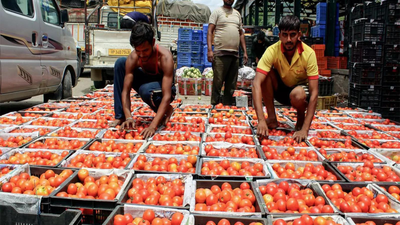ARTICLE AD BOX

Food inflation is expected to remain under control in the second half of FY26, supported by better monsoon rains and improved sowing conditions. However, ICICI Bank’s Global Markets sectoral update has warned that an “adverse base” could push food inflation higher in FY27.
A base effect means inflation can look unusually high or low depending on the price levels in the same period last year.As per news agency ANI, the report stated, “Higher rainfall and sowing bode well for the outlook in H2FY26, but an adverse base should push food inflation higher next year (FY27)”.The outlook comes at a time when India’s wholesale inflation has eased to its lowest point in more than two years. In October, wholesale inflation slipped further into contraction, led by a sharp fall in primary food articles. Vegetable prices continued to ease due to steady supplies and favourable weather, while cereals, pulses, spices and fruits also recorded declines.Month-on-month food prices remained broadly steady, suggesting that the sharp disinflation seen earlier is stabilising. The wider primary articles category posted another month of contraction, extending its streak of negative readings because of weak pricing in both food and non-food items, as per ANI.
The report highlighted that corrections in key high-frequency items such as tomatoes, onions and some grains have played a major role in pulling down wholesale food inflation this year. Fuel inflation also stayed in negative territory, helped by lower global crude oil prices compared to last year. While a few petroleum products saw sequential increases, the broader fuel and power index remained subdued.Inflation in manufactured products also moderated with easing prices in metals and some industrial inputs. However, certain segments—including jewellery, tobacco, pharmaceuticals and select fabricated metals—showed firming trends, indicating that global commodity movements could create some upward pressure in the months ahead.

 1 hour ago
3
1 hour ago
3









 English (US) ·
English (US) ·